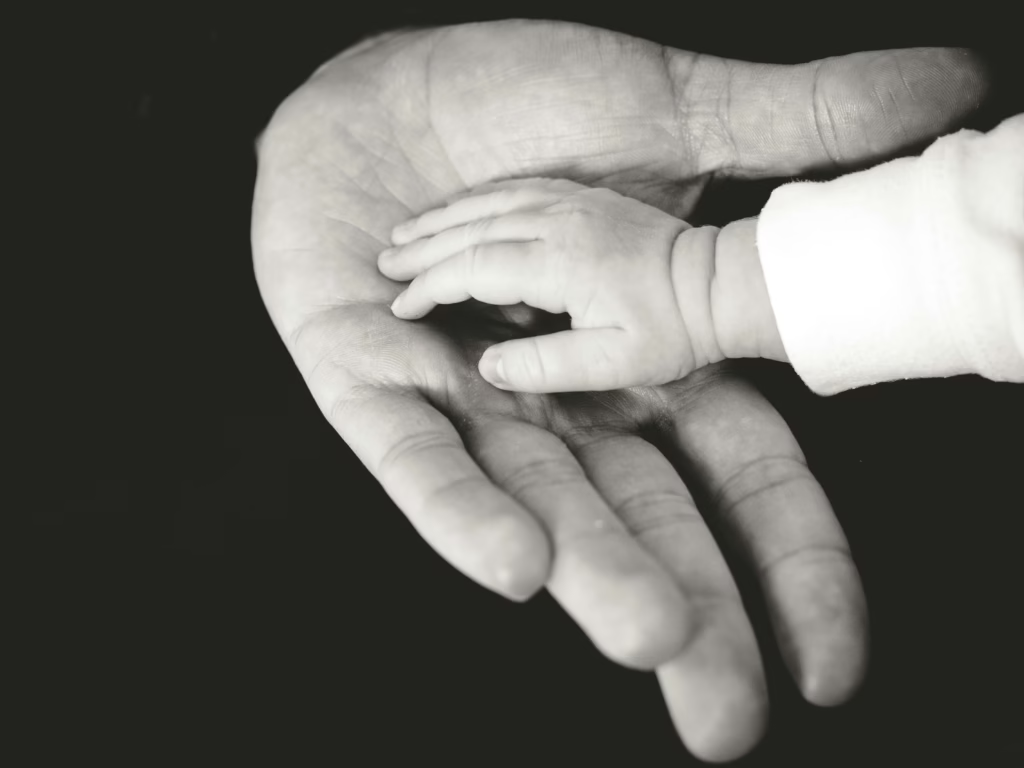Introduction
Did you know that egg donation cycles have some of the highest success rates among all assisted reproductive technologies, with live birth rates approaching 50% in optimal conditions? As more individuals and couples turn to egg donation to build their families, understanding the actual success rates becomes increasingly important in making informed decisions. The landscape of egg donation success rates has evolved significantly over the past decade, with technological advances and improved protocols enhancing outcomes for recipients worldwide. This article explores what current egg donation success rates really look like, the factors that influence them, and what prospective parents should know when considering this family-building path.
What Are Egg Donation Success Rates?
Egg donation success rates refer to the statistical likelihood of achieving a live birth through a cycle using donated eggs. Unlike success rates with a woman’s own eggs, which decline significantly with age, egg donation success rates remain relatively stable since donors are typically young women (usually between 21-32 years old) with optimal fertility. These rates are typically measured in several ways:
- Pregnancy rate per embryo transfer: The percentage of embryo transfers resulting in a positive pregnancy test
- Clinical pregnancy rate: The percentage of transfers resulting in a pregnancy confirmed by ultrasound
- Live birth rate: The most meaningful metric – the percentage of egg donation cycles resulting in the birth of a baby
According to the Society for Assisted Reproductive Technology (SART), egg donation success rates are consistently higher than IVF using a woman’s own eggs, particularly for women over 40, making it an important option for many on their fertility journey.
Why It Matters
Understanding egg donation success rates is crucial for prospective parents navigating fertility challenges. For many individuals and couples – including same-sex male couples, single men, women with premature ovarian failure, women over 40, and those with genetic concerns – egg donation represents a promising path to parenthood when other options have been exhausted.
The emotional impact of these statistics cannot be overstated. Recipients often experience a complex mix of hope, anxiety, and financial pressure when pursuing egg donation. Realistic success data helps:
- Set appropriate expectations and reduce emotional disappointment
- Guide financial planning, as egg donation can require significant investment
- Inform decisions about how many cycles to attempt
- Assist in choosing between fertility clinics based on their specific egg donation outcomes
For LGBTQ+ families and single parents by choice, egg donation success rates take on additional significance as these paths often represent a primary rather than secondary route to biological parenthood.
The Process
Understanding how the egg donation process works helps contextualize success rates at different stages:
Donor Screening and Selection
- Medical screening (physical exam, blood tests, genetic carrier screening)
- Psychological evaluation
- Ovarian reserve testing to predict response to stimulation
- Success impact: Thorough screening correlates with higher success rates
Stimulation and Retrieval
- Donor undergoes controlled ovarian stimulation
- Monitoring through blood tests and ultrasounds
- Egg retrieval procedure under sedation
- Success impact: Higher number of mature eggs retrieved generally increases success rates
Fertilization and Embryo Creation
- Eggs fertilized with recipient’s partner’s or donor sperm
- Development monitoring for 3-6 days
- Success impact: Fertilization rates typically range from 70-80%
Embryo Transfer
- Fresh or frozen embryo transfer to recipient’s prepared uterus
- Success impact: Frozen embryo transfers often show higher success rates than fresh transfers
The Centers for Disease Control and Prevention (CDC) reports that the average number of eggs retrieved from donors is 15-20, with approximately 70% being mature and suitable for fertilization – a key factor in the overall success rates.
Benefits and Considerations
Benefits of Egg Donation
- High success rates: According to a 2022 study published in Fertility and Sterility, fresh donor egg cycles resulted in live birth rates of 56.1% for recipients under 35, significantly higher than IVF with own eggs
- Age barrier circumvention: Eliminates the impact of recipient’s age on egg quality
- Genetic link: Allows for a genetic connection to one parent when using partner’s sperm
- Pregnancy experience: Enables the recipient to experience pregnancy and childbirth
Considerations
- Financial investment: Average costs range from $25,000-$50,000 per cycle
- Success not guaranteed: Despite high rates, approximately 30-40% of cycles don’t result in live birth
- Medication effects: Recipients undergo hormone therapy to prepare the uterine lining
- Emotional complexity: Processing genetic disconnection requires psychological adjustment
- Multiple pregnancy risk: Historical practices of transferring multiple embryos increased success rates but also multiple pregnancy rates, though single embryo transfer is now becoming standard
The American Society for Reproductive Medicine (ASRM) reports that success rates vary significantly between clinics, with top-performing clinics achieving live birth rates up to 65% per transfer with donor eggs.
Common Misconceptions
Myth 1: Egg donation guarantees a baby
Reality: While egg donation success rates are high (approximately 50-60% per cycle), they’re not 100%. Some recipients require multiple cycles, and success depends on numerous factors beyond egg quality.
Myth 2: All clinics have similar egg donation success rates
Reality: Success rates can vary by 15-25% between clinics. Factors include laboratory quality, embryologist experience, and clinic-specific protocols. The CDC’s Assisted Reproductive Technology (ART) Success Rates Report shows this significant variation.
Myth 3: Success rates are the same regardless of recipient age
Reality: While egg quality remains constant (based on donor age), recipient age can impact success rates, though less dramatically than with own-egg IVF. Recipients over 45 may experience lower implantation rates due to uterine factors.
Myth 4: Fresh donor eggs yield better success rates than frozen
Reality: Recent data shows comparable or even slightly higher success rates with frozen donor eggs, with the added benefits of simplified logistics and typically lower costs.
Myth 5: Higher donor compensation correlates with better success rates
Reality: Donor compensation reflects market factors and agency policies, not the quality of the donor’s eggs or resulting success rates.
Legal and Ethical Aspects
The legal landscape surrounding egg donation success rates varies significantly by location, affecting both transparency and outcomes:
- United States: The CDC and SART require fertility clinics to report success rates, making this data publicly available. However, reporting methodologies vary, making direct comparisons challenging.
- European countries: Many have stricter regulations, including limits on how many embryos can be transferred, potentially affecting reported success rates.
- Australia and Canada: Have robust reporting requirements but typically limit compensation to donors, potentially affecting donor availability and indirectly impacting success rates.
Ethically, clinics face pressure to maintain high egg donation success rates, which can sometimes lead to practices that maximize statistics but may not serve individual patients optimally, such as:
- Transferring multiple embryos (increasing success rates but also multiple pregnancy risks)
- Selective patient acceptance (declining complex cases that might lower statistics)
- Aggressive stimulation protocols for donors (maximizing egg numbers but potentially increasing donor risks)
The Ethics Committee of the ASRM emphasizes that transparency in reporting egg donation success rates is an ethical obligation to prospective parents.
Support and Resources
When evaluating egg donation success rates and making decisions, consider these valuable resources:
- CDC’s ART Success Rates Report: Provides verified data on clinic-specific outcomes
- SART Patient Portal: Offers a personalized predictor tool for success rates based on individual factors
- Resolve (The National Infertility Association): Provides support groups specifically for those considering or pursuing egg donation
- Parents Via Egg Donation: Online community with resources about the emotional aspects of the journey
- Egg Donation Friends: International directory with clinic ratings and success rate information
Books that provide valuable insights:
- “Having Your Baby Through Egg Donation” by Ellen Sarasohn Glazer
- “Third Party Reproduction: A Comprehensive Guide” by James M. Goldfarb
Most importantly, consult with reproductive endocrinologists at several clinics to discuss their specific egg donation success rates and how they apply to your particular situation.
Conclusion
Egg donation success rates represent some of the most promising statistics in assisted reproduction, offering hope to many who cannot use their own eggs to conceive. While national averages hover around 50-60% live birth rate per cycle, individual outcomes depend on numerous factors including clinic expertise, donor screening protocols, and recipient characteristics. Beyond the statistics, each egg donation journey represents a unique path to family building that combines medical science, human generosity, and the profound desire to parent.
As you consider egg donation, remember that success rates are just one component of this complex decision. Emotional readiness, financial planning, and ethical comfort with the process are equally important considerations. By understanding both the promising statistics and the nuanced factors that influence egg donation success rates, you can approach this family-building option with realistic expectations and informed hope.
Frequently Asked Questions
What is the average success rate for egg donation across all age groups?
The national average live birth rate per embryo transfer using fresh donor eggs is approximately 54%, though this varies by recipient age and clinic. With frozen donor eggs, rates average around 43-50%.
How do egg donation success rates compare to regular IVF success rates?
Egg donation success rates significantly outperform traditional IVF with own eggs, particularly for women over 40. While IVF success rates with own eggs drop to below 10% for women over 42, egg donation success rates remain relatively stable regardless of recipient age.
Does the egg donor's age significantly impact success rates?
Yes. Donors between ages 21-29 typically produce eggs that result in the highest success rates. The American Society for Reproductive Medicine notes a gradual decline in success rates with donors over age 33.
Do success rates differ between known donors and anonymous donors?
Clinically, there is no significant difference in success rates between known and anonymous donors when controlling for donor age and health factors. The choice between known and anonymous donation is primarily social and emotional rather than medical.
How many donor eggs are typically needed for a successful pregnancy?
Most egg donation cycles yield 15-20 eggs, resulting in approximately 3-6 high-quality embryos. Statistically, many recipients achieve pregnancy with their first or second embryo transfer, though some may require all available embryos over multiple transfers.
Have egg donation success rates improved over the past decade?
Yes. According to a longitudinal analysis by the Society for Assisted Reproductive Technology, egg donation success rates have improved by approximately 10% over the past decade due to advances in laboratory techniques, improved embryo culture systems, and refinements in embryo selection methods including preimplantation genetic testing.







